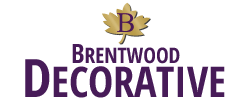
Hand painted kitchen units are in vogue at the moment and reflect your personality. It breaks away from the common laminated or sprayed uniformity that has been the norm for so long. A hand painted finish creates charm and character into the room in which many of us spend a lot of family time.
Choosing the Colour
The colour choice for your beloved kitchen in critical and sets the tone for the whole room as the cabinetry generally covers a large surface area. Get it wrong and you can be very disappointed with a very expensive mistake. Luckily we have the expertise to help guide you in your choice during our survey. When deciding on a colour it’s crucial that you take into account the size of the room, the style of the cabinets and the chosen worktop. There is also a number of other options to consider. To paint all the units in the same colour or to have blocks of units in an alternative colour, as in the image above. Which ever you decide all the paints we use are of the highest quality, specifically made for areas such as kitchens to ensure it lasts and lasts.
Choosing a Paint Finish
The paint finish is as crucial as the colour. It is a rule of thumb that kitchen units are painted in either a oil based Gloss finish, Satin or for a more rustic look a chalk paint finish, the latter is not so durable as the others but is still very popular. Also as the chalk paint finish is water based it will also emphasize the brush strokes.
The Painting Process
We will remove all the cabinet doors and associated ironmongery then either take them back to our depot or if you have the space move to another suitable location at the property. A working platform will be erected to allow for ease of working. Each door will be carefully sanded back and front to provide a ‘key’ for the redecoration. They will then be brushed down and cleaned of any grease to allow for the best possible adhesion for the paint. Depending on the original door finish a primer will be applied and left to dry. The primer is lightly sanded and an undercoat is applied, left to dry and lightly sanded. Finally two coats of topcoat will be applied to leave a virtually stoke free surface. Alternatively if you would prefer a rustic feel we can prep the doors in such a way to ensure the brush strokes are more visible. If however you would like to go really rustic with a chalk based paint the process is slightly different and will leave deep brush marks. This finish also looks great distressed allowing the new base colour to come through at the molded edges. Although Chalk paint is not so durable as other paints it can be lacquered to produce a more hard wearing surface.
